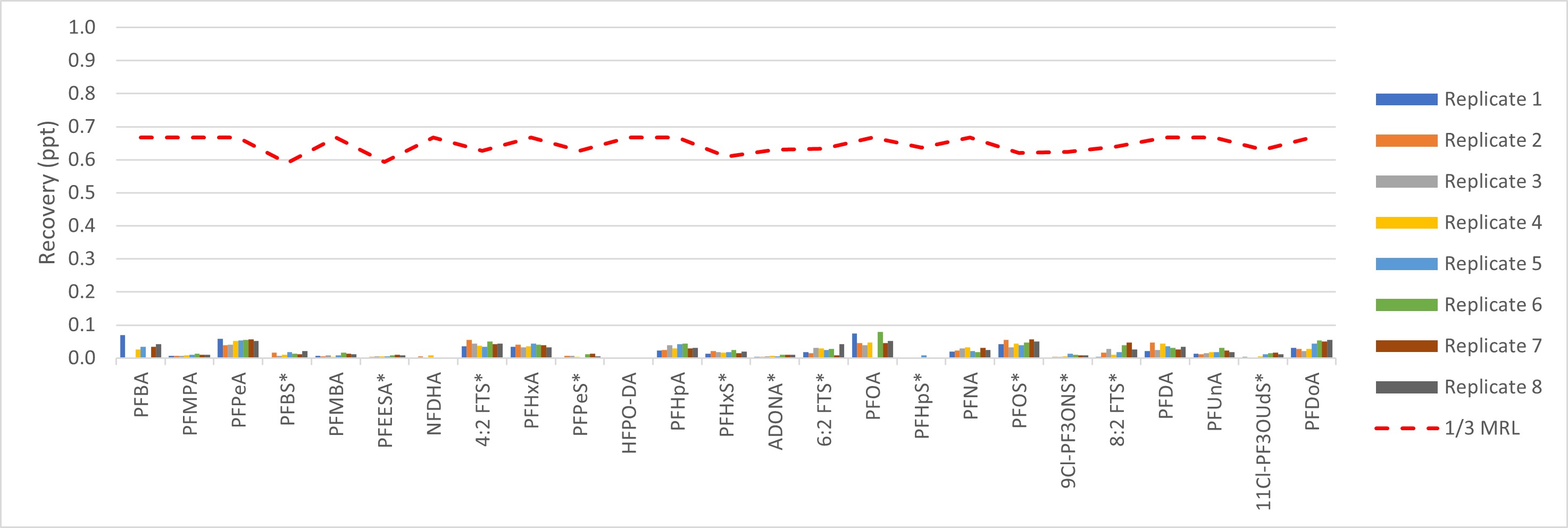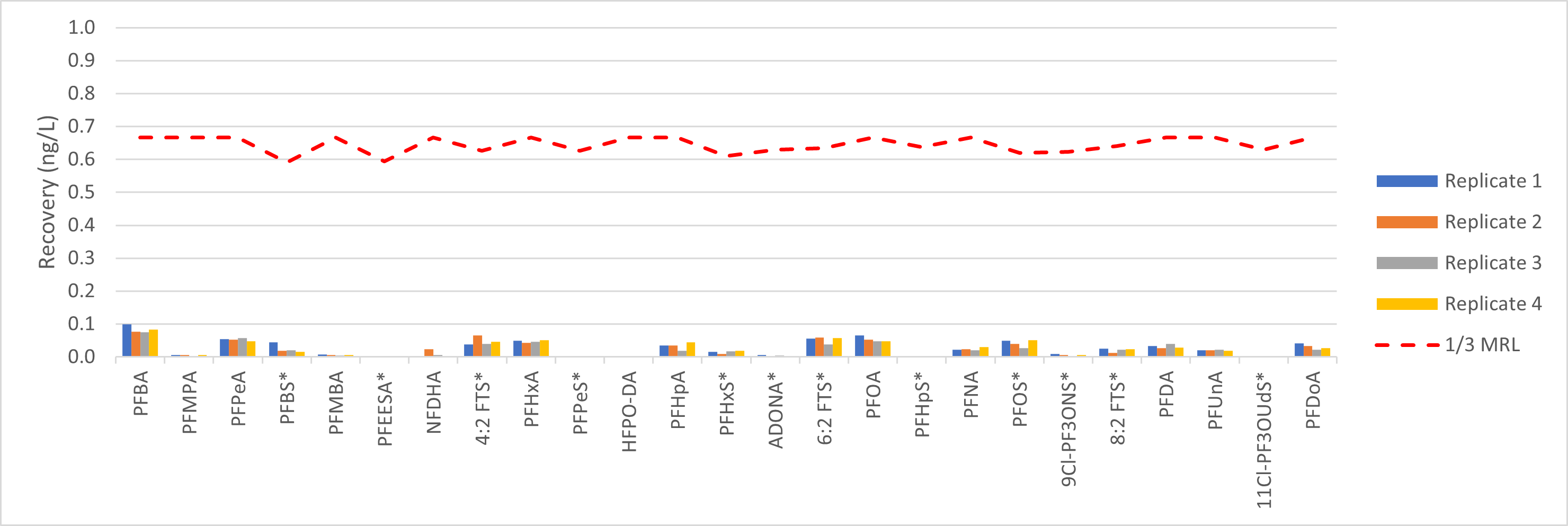Environmental laboratories are often required to demonstrate that their procedures do not introduce background contamination or interferences that would result in false positives or poor analytical performance. In this blog, I will walk through how to demonstrate low background contamination for the extraction of Per- and polyfluoroalkyl substances (PFAS) in drinking water using EPA method 533.
Method Requirements
EPA method 533 is an extremely sensitive method capable of detecting 24 different PFAS analytes at sub part per trillion levels or <1ppt. To put that into perspective, that would allow one to detect a single drop of food coloring that was added to a container with water that could fill twenty Olympic-sized pools! Such a sensitive detection technique therefore requires laboratories to demonstrate that the entire sample processing procedure does not introduce PFAS contamination at levels that lead to reporting false positives. In the case of EPA 533, the background criteria are set at 1/3 of the lowest concentration minimum reporting limit (1/3 LCMRL) for each target analyte in the method. The challenge here is that although the current EPA 533 method lists the LCMRLs in table 17, it also clearly states in section 1.2 that lower LCMRL values have been achieved. So, although EPA method 533 leaves the LCMRL values open to interpretation, a good place to start when evaluating PFAS background levels would be at an LCMRL of 2ppt, which means background levels must be below 1/3 the LCMRL or ~0.67ppt.
Analytical & Solvent Evaporation Check
Now that we have the ~0.67ppt acceptance criteria we can begin to evaluate our sample processing procedure in order to identify the presence of any background PFAS levels. It is important to check each step of your procedure separately, to help identify at what point PFAS background is being introduced into your workflow. The best place to start is by running solvent blanks on your Liquid Chromatography/Tandem Mass Spectrometry (LC/MS/MS) system. This checks that that any PFAS background introduced by the analytical portion of your test is quantified. Next you will want to test your extraction solvents, extract collection tubes, and concentration system. The most important part of this test is to make sure that you perform a concentration check on your extraction solvents. To do this you will need to place the full amount of extraction solvent used in the procedure into the collection tube and concentrate to volume and analyze as described in the method. The chart below displays a solvent concentration check for EPA 533 was produced using a TurboVap® LV and analyzed on an LC/MS/MS.

Note* Those compounds with an asterisk were used in salt form.
Laboratory Reagent Blank Check
After confirming your analytical, extraction solvents and evaporation procedure has acceptable background levels, it is time to perform a laboratory reagent blank (LRB) extraction. EPA method 533 requires LRBs to be processed through the entire sample preparation procedure which includes weak anion exchange (WAX) solid phase extraction (SPE) media, extraction manifolds, and solvent evaporation. What is interesting about EPA method 533 is that it allows two WAX sorbent mass options 200mg or 500mg. Therefore, laboratories must evaluate the sorbent mass they plan on utilizing on a routine basis. The chart below was produced by evaluating 250mL replicate LRBs extracted on 500mg EVOLUTE® PFAS SPE columns, using the VacMaster™ 20 manifold and TurboVap® LV concentration system.
 Note* Those compounds with an asterisk were used in salt form.
Note* Those compounds with an asterisk were used in salt form.
Summary
EPA method 533 is an extremely sensitive technique for the detection of up to 24 different PFAS analytes in drinking water samples. It is important for laboratories to demonstrate that their procedure does not introduce background PFAS contamination that could impact their reporting limits or lead to reporting false positives. To learn more about sample preparation for EPA 533, download the application note below.

 Organic Workflow
Organic Workflow Peptide Workflow
Peptide Workflow Scale-Up Flash Purification
Scale-Up Flash Purification  Sample Preparation
Sample Preparation Biomolecule Purification
Biomolecule Purification Oligo synthesis
Oligo synthesis Scavengers and Reagents
Scavengers and Reagents Service & Support
Service & Support Accessories & Spare parts
Accessories & Spare parts Investors
Investors Reports & News
Reports & News The Share
The Share Corporate Governance
Corporate Governance Calendar
Calendar Sustainability
Sustainability Our Offering
Our Offering Our History
Our History Our Locations
Our Locations Leadership
Leadership
